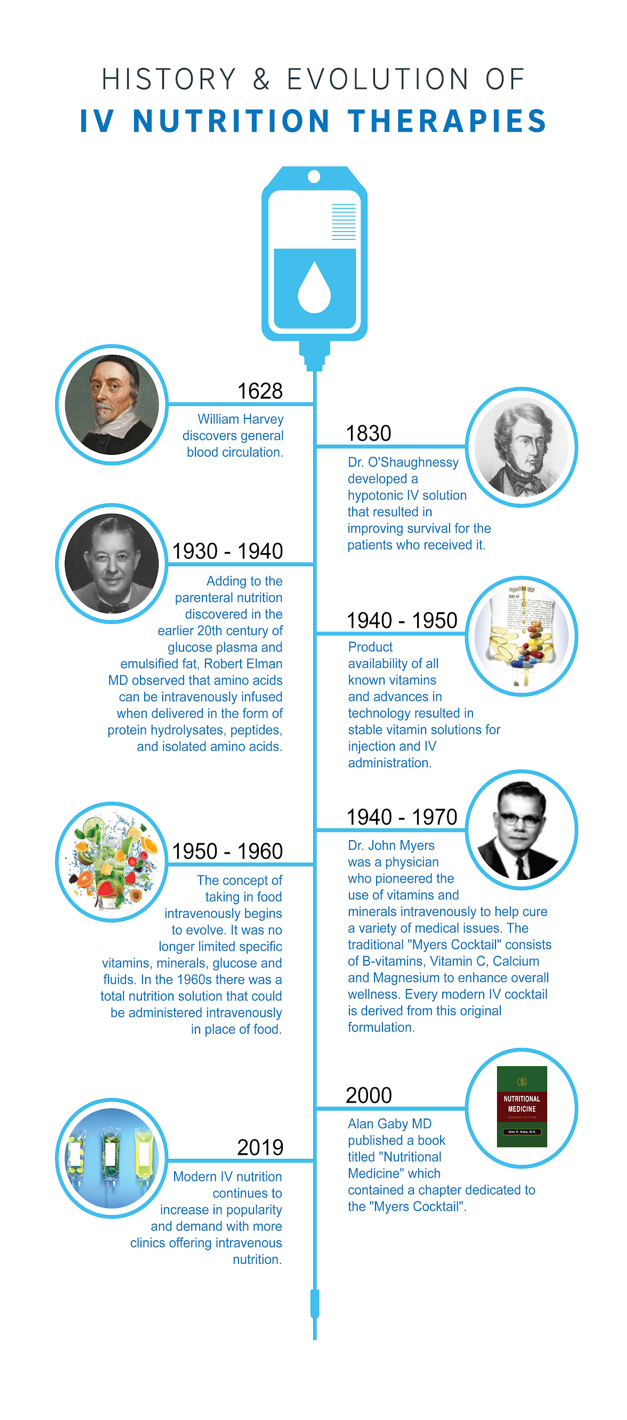History and Evolution of IV Nutrition Therapies
Modern-day intravenous nutrition is preceded by an interesting history founded in wild experimentation, survival, and necessary supplementation. IV and injectable nutrition therapies remain a popular wellness treatment that both patients and physicians regularly inquire about.
Despite sporadic, informal, and superficial clinical data, common IV nutrition protocols continue to evolve as part of a group of wellness-related medical treatments that remain in high demand.
In fact, infusing or injecting specific micronutrients or nutritional solutions is not a new therapy, as parenteral nutrition use goes back to the early 20th century while the basic IV administration of fluids and electrolytes begins in the 1800s.
Nutrition Therapy in the Early 20th Century
A major step towards a better understanding of parenteral nutrition occurred during the early 20th century when infusions of glucose, plasma, and emulsified fat into humans became possible.
During the 1930s to 1940s, a clinical surgery professor at Washington University named Robert Elman, MD observed that amino acids can be intravenously infused when delivered in the form of protein hydrolysates, peptides, and isolated amino acids.
Prior to this, our knowledge of amino acid metabolism was accumulated over time. Our understanding of the effects of specific amino acids and proteins in humans began to accelerate with Elman’s discoveries along with the work of many others researching protein metabolism in previous years.
In 1948, Elman concluded that the “use of parenteral amino acid mixtures enables the physician to treat disease without protein starvation.”
By the late 1940s, there was product availability of all known vitamins, and advances in technology resulted in stable vitamin solutions for injection and IV administration.
The availability of supplemental vitamins and minerals allowed doctors to treat vitamin deficiencies and the diseases that proceeded or resulted in those deficiencies.
What’s more, supplementation was now available in multiple dosage forms, including injection.
